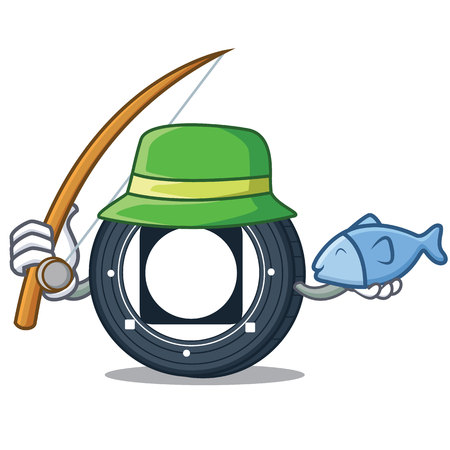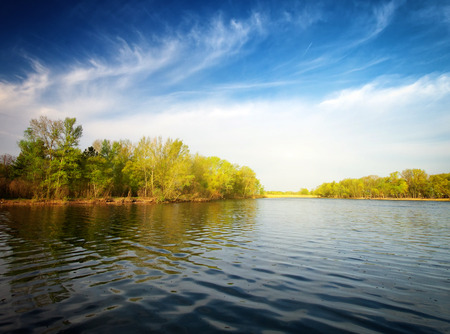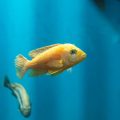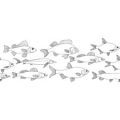1. Introduction
Catch and release fishing has become a cornerstone of recreational angling culture across the United States, promoting sustainable fisheries and conservation ethics. Anglers release millions of fish annually, with the goal of preserving healthy populations for future generations. However, the success of catch and release practices depends on several environmental factors, among which water temperature and depth are particularly significant. These two variables directly impact fish physiology, stress levels, and post-release survival rates. Understanding their influence is crucial for both casual anglers and fisheries managers who wish to maximize conservation outcomes while enjoying America’s diverse fishing opportunities.
2. The Science Behind Water Temperature and Fish Physiology
Understanding the relationship between water temperature and fish physiology is crucial for anglers practicing catch and release in American lakes, rivers, and coastal waters. Fish are cold-blooded creatures, meaning their body temperature—and all metabolic processes—are directly influenced by the surrounding water. This makes them particularly sensitive to changes in temperature, especially during stressful events like being caught and released.
How Water Temperature Affects Fish Stress Levels
When water temperatures rise, fish metabolism speeds up. While this means they might fight harder on the line, it also increases their need for oxygen at a time when warmer water actually holds less dissolved oxygen. This combination leads to higher stress levels and slower recovery after release. Conversely, in colder water, fish metabolism slows down, which can reduce immediate stress but may lengthen recovery times if the water is too cold.
Survival Rates in Different Temperatures
The survival rate of released fish is highly dependent on water temperature. Heres a quick overview of how common sportfish species respond to various temperature ranges:
| Species | Optimal Release Temp (°F) | High-Stress Temp (°F) | Survival Rate (%) |
|---|---|---|---|
| Largemouth Bass | 60-75 | >80 | 90+ (optimal), <70 (high-stress) |
| Rainbow Trout | 50-65 | >68 | 95+ (optimal), <60 (high-stress) |
| Northern Pike | 55-70 | >75 | 90+ (optimal), <80 (high-stress) |
| Redfish (Red Drum) | 65-78 | >82 | 90+ (optimal), <75 (high-stress) |
Key Takeaways for Anglers
If you’re fishing during the heat of summer or a warm snap, pay close attention to the surface temperature. Consider fishing early in the morning or late in the evening when waters are cooler, and always minimize handling time to reduce stress on the fish. In colder months or regions, be mindful that while fish may seem less stressed at first, prolonged exposure to air or rough handling can still impact their survival.
The Bottom Line: Post-Release Health
Whether you’re casting in a mountain stream for trout or flipping jigs for bass in a Southern reservoir, understanding how water temperature affects your catch can make all the difference. By adjusting your techniques according to local conditions and prioritizing fish health, you’ll help ensure strong post-release survival rates—and better fishing for everyone.

3. Depth Considerations in Catch and Release
Water depth plays a critical role in the catch and release success of many popular American game fish species, such as largemouth bass, walleye, trout, and snapper. As anglers target fish at varying depths, understanding how these changes affect fish physiology becomes essential for promoting responsible fishing practices.
How Water Depth Impacts Fish During Catch and Release
Fish experience significant changes in pressure as they are brought to the surface from deep water. Rapid decompression can cause barotrauma—a condition where gases in the fish’s body expand quickly, leading to swim bladder inflation, eye protrusion (exophthalmia), or even organ displacement. The severity of these effects depends largely on both the depth from which the fish is caught and the species’ ability to regulate internal pressure.
Common Effects of Rapid Decompression by Depth
| Depth (ft) | Possible Effects on Fish | Species Most Affected |
|---|---|---|
| 0–10 | Minimal physical impact; quick recovery likely | Largemouth Bass, Bluegill |
| 11–30 | Mild swim bladder expansion; may require venting | Smallmouth Bass, Crappie |
| 31–60 | Noticeable barotrauma; visible distention, difficulty swimming down | Walleye, Lake Trout |
| >60 | Severe barotrauma; high risk of mortality without intervention | Snapper, Grouper, Deepwater Trout |
Decompression Tools and Best Practices for American Anglers
Many U.S. fisheries management agencies recommend using descending devices or venting tools to help deep-caught fish safely return to their original depth. Proper use of these tools can significantly reduce post-release mortality by relieving internal pressure and allowing fish to reacclimate to deeper water. In some states—such as Florida—these tools are required by law when targeting reef fish species like snapper and grouper.
Understanding the relationship between water depth and decompression effects empowers American anglers to make informed decisions during catch and release. Adjusting fishing techniques based on depth not only supports conservation but also helps sustain healthy fisheries for future generations.
4. Practical Strategies for Anglers
Successful catch and release angling in the U.S. depends on understanding and adapting to local water temperatures, depths, and popular game fish species. Employing region-specific tactics can greatly improve post-release survival rates. Below are actionable tips and best practices tailored for American anglers:
Adapt Your Approach Based on Water Temperature
| Water Temperature | Recommended Actions | Common Sport Fish |
|---|---|---|
| < 60°F (15.5°C) | Use longer fight times; fish recover faster Limit air exposure to < 10 seconds |
Trout, Salmon, Walleye |
| 60–75°F (15.5–24°C) | Minimize handling time Use rubber nets and wet hands Keep fish in water during hook removal |
Bass, Pike, Catfish |
| > 75°F (24°C) | Avoid targeting sensitive species Fish early morning or late evening Reduce stress by using heavier tackle for quick landings |
Largemouth Bass, Sunfish, Carp |
Select Optimal Depths for Catch and Release Success
Depth plays a significant role in fish survival after release. Fish caught from deeper waters are more susceptible to barotrauma. To mitigate this:
- Shallow Waters (< 20 ft): Ideal for most catch and release as fish experience less pressure change.
- Deep Waters (> 30 ft): Use descending devices or venting tools for species prone to barotrauma (like bass and walleye).
- Avoid rapid retrieval: Bring fish up slowly from deep water to allow them to adjust.
Best Practices by Habitat Type
| Habitat Type | Main Considerations | Key Tips |
|---|---|---|
| Lakes & Reservoirs | Thermal stratification, deeper water zones in summer/fall Potential for low oxygen at depth |
Aim for surface or near-surface fishing during warm months Release fish quickly in well-oxygenated areas near shorelines |
| Rivers & Streams | Cooler, moving water Fish often found in riffles and pools with higher oxygen levels |
Keep fish submerged during handling Favor barbless hooks to reduce injury and speed up releases |
| Coastal Waters & Estuaries | Tidal changes impact temperature and oxygen Popular for striped bass, redfish, sea trout |
Avoid fishing at peak heat and low tides Handle saltwater species minimally; use non-stainless circle hooks to prevent deep hooking |
Tackle & Technique Adjustments for Popular U.S. Species
- Bass: Use heavy enough gear to minimize fight duration, especially in warm water.
- Trout: Employ single barbless hooks; avoid fishing midday during summer when streams heat up.
- Panfish: Quickly unhook and gently release smaller species like bluegill or crappie.
- Pike/Muskie: Support the body horizontally when lifting from water; use long-nose pliers for safe hook removal.
- Saltwater Game Fish: Always wet your hands before touching; support large fish under the belly when taking photos.
Final Pro Tips for American Anglers:
- Cary a thermometer to monitor water temps in real time.
- Avoid overcrowding landing nets and always revive exhausted fish facing upstream before release.
- If local regulations allow, consider skipping catch-and-release on days when conditions are stressful (high temps/low oxygen).
By applying these habitat- and temperature-specific strategies, American anglers can maximize both their enjoyment of the sport and the health of fisheries across the nation.
5. Case Studies and Regional Perspectives
Across the United States, the impact of water temperature and depth on catch and release success is widely documented in both freshwater and saltwater fisheries. Real-world examples from diverse regions highlight how these factors can shape angling outcomes and fish survival rates.
Northeast: Coldwater Trout Streams
In states like Pennsylvania and New York, wild trout populations thrive in cool, shallow streams. During summer heatwaves, as water temperatures climb above 68°F (20°C), studies show that post-release mortality can rise dramatically. Local regulations often include seasonal closures or encourage fishing only during cooler morning hours to protect trout during thermal stress.
Southeast: Largemouth Bass in Southern Reservoirs
Largemouth bass are popular targets in warm southern reservoirs throughout Texas, Georgia, and Florida. Here, summer surface temperatures frequently exceed 80°F (27°C), especially in shallower coves. Anglers report higher delayed mortality after catch and release when bass are pulled from deep, thermally stratified waters due to rapid pressure and temperature changes.
| Region | Species | Critical Water Temp (°F) | Depth Concerns |
|---|---|---|---|
| Northeast | Brook Trout | >68 | Shallow streams heat quickly |
| Southeast | Largemouth Bass | >80 | Deep reservoir stratification issues |
| West Coast | Steelhead/Salmon | >65 | Migration through warm, shallow sections problematic |
Pacific Northwest: Salmon and Steelhead Migration
The Columbia River Basin sees annual migrations of salmon and steelhead. As river temperatures approach or exceed 65°F (18°C), released fish experience greater physiological stress, especially after being hooked in deep pools and brought to the surface quickly. Fishery managers have responded by monitoring river temps closely and implementing voluntary angling restrictions during peak heat periods.
Great Lakes: Smallmouth Bass Hotspots
In Lake Erie and other Great Lakes fisheries, smallmouth bass are often found at varying depths depending on season. Catch-and-release success is highest during spring and fall when surface temps are moderate. However, during mid-summer, pulling bass from deeper, cooler water into warmer surface layers can lead to barotrauma and higher mortality.
Key Takeaways for U.S. Anglers
- Avoid fishing during extreme heat or rapid weather changes to maximize survival rates.
- If targeting fish at significant depth differentials, use proper techniques to minimize barotrauma (e.g., slow retrieval, venting tools where legal).
- Pay attention to local advisories regarding water temperature thresholds for specific species.
Conclusion: Regional Awareness Is Crucial
The diversity of American fisheries means there’s no one-size-fits-all solution. Understanding how water temperature and depth interact locally can help anglers make informed decisions that support healthy fish populations—ensuring great fishing for generations to come.
6. Conclusion and Conservation Takeaways
Understanding the influence of water temperature and depth on catch and release success is vital for recreational anglers committed to conserving Americas diverse fish populations. Our review highlights several key findings that underscore the need for environmentally conscious angling practices:
| Factor | Impact on Fish Survival | Best Practices |
|---|---|---|
| Water Temperature | High temperatures increase stress and mortality rates. | Fish during cooler parts of the day or season; minimize handling time. |
| Depth of Capture | Greater depths can lead to barotrauma and reduced survival. | Use descending devices or avoid deep-water species when possible. |
| Handling Techniques | Poor handling increases injury and delayed mortality. | Wet hands, use rubber nets, and release fish quickly. |
Summary of Key Findings:
- Temperature Matters: Fish released in warmer water are less likely to survive. Anglers should monitor local water temps and adjust their fishing plans accordingly.
- Depth Challenges: Deep-water releases require extra care due to rapid pressure changes. Employing proper release tools can significantly improve outcomes.
- Technique Counts: Gentle handling, minimizing air exposure, and using appropriate gear all contribute to higher post-release survival rates.
The Importance of Conservation:
Culturally, catch and release is a cornerstone of American sportfishing ethics. By staying informed about how environmental factors affect fish recovery, anglers help ensure that future generations can enjoy healthy fisheries. Every catch-and-release decision made with conservation in mind supports sustainable fish populations across the United States’ lakes, rivers, and coasts.


